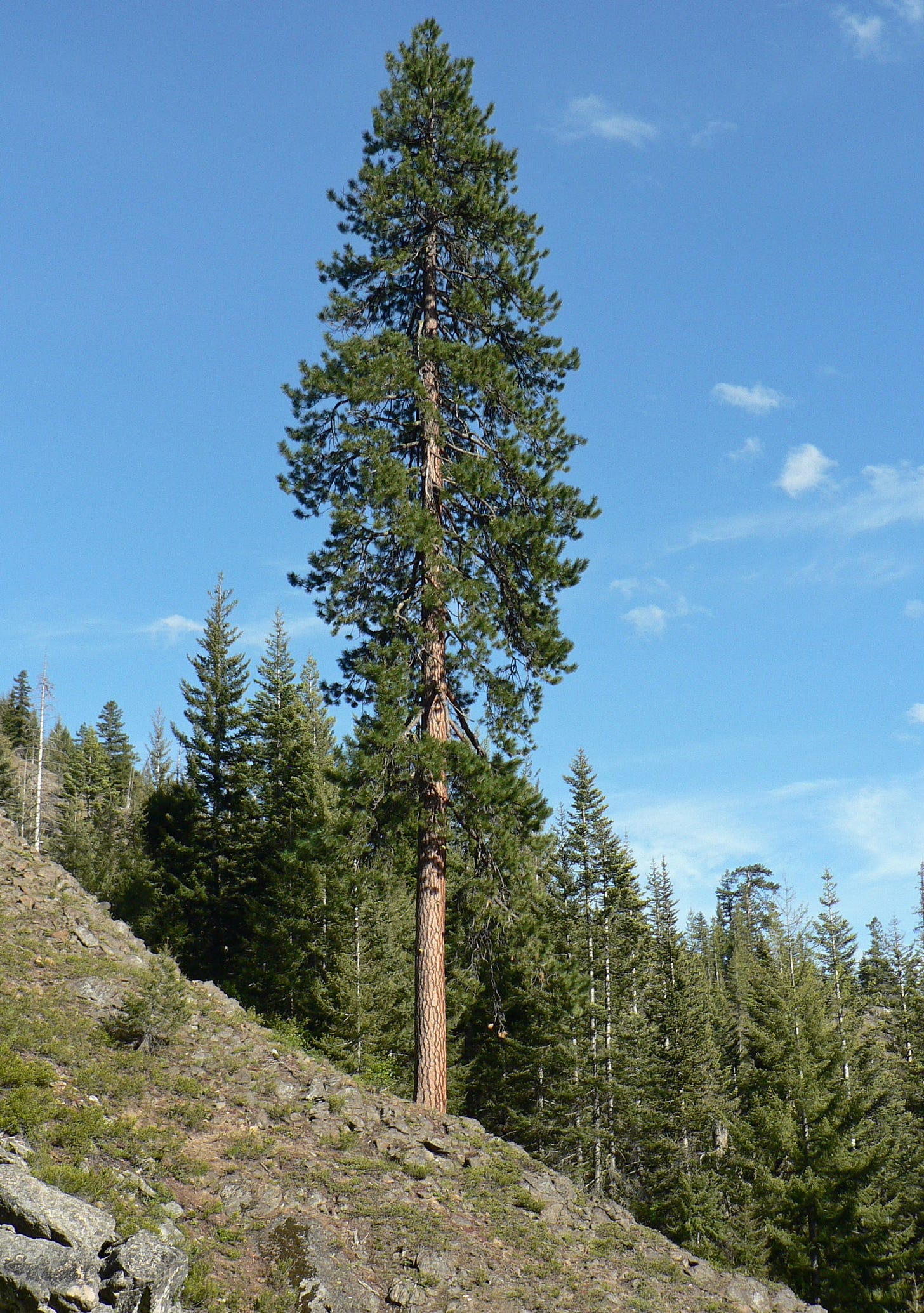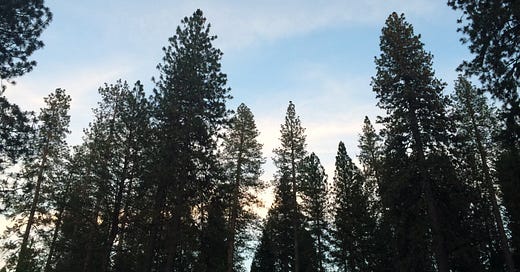ode to the ponderosa pine
If you’ve been to western North America, chances are you’ve encountered ponderosa pine. Tall, upright, and stately, from far away they appear as a swath of green blanketing the hills, from up close as quiet sentinels.
Growing up in Northern California, ponderosa pines painted the mountains of my hometown. And on a recent trip to the backcountry of Idaho, the ponderosa forests were both instantly recognizable and profoundly comforting.
Pinus ponderosa is arguably the tree of the west, occupying an area from Mexico to southern Canada and from the Pacific Coast all the way to Oklahoma and Nebraska. The pines grow in a wide elevation range, so you’ll see them while driving on coastal highways or hiking high up in the mountains.
Even if you haven’t had the pleasure of meeting a ponderosa pine in person, I guarantee you’ve seen pictures. Google “pine forest western U.S.” and ponderosa pine is a top hit.
I believe that ponderosa pine defines the western forest ecosystems. Each region has its own unique ponderosa subspecies and they grow in association with other native trees and understory vegetation. From the Pacific, to Arizona, to the Rockies, ponderosa pine are foundational to diverse mountain plant communities.

But although they appear steadfast and enduring, ponderosa pine forests are changing. Climate change is rewriting their narrative, causing warmer winters and intense wildfires that threaten the health of ponderosa ecosystems. Areas that historically experience below-freezing winter temperatures are shrinking, pushing ponderosa pines higher in elevation and further north.
While they chase their optimal habitat, hardwood trees like oaks are free to expand upslope and northward, disrupting the vegetation structure of western forests. This has impacts on associated animal species, soil moisture, nutrient cycling, and even human economic ventures like tourism and timber.
And there is another layer of complexity: the relationship between ponderosa pine, climate change, and fire.
Ponderosa and fire are often discussed in the same breath. Unlike some other conifers, ponderosa pines do not need fire to open their cones and reproduce, but fire is integral to the health and structure of ponderosa stands.
As young seedlings, ponderosa pines are actually very susceptible to fire, and it isn’t until their fifth or sixth year of life that they develop thick bark, deep roots, and enough height to survive low-severity wildfires.
Frequent, low-intensity fires clear away saplings, understory growth, and dead vegetation, decreasing the burden of competition and creating those classic open ponderosa forests. Historically, ponderosa pine ecosystems have burned every 5-25 years.
But the past century of fire suppression and climate change has led to large, infrequent fires. Too much time between fires forces ponderosa pines to compete with each other and understory vegetation for light, water, and nutrients. Too large of a fire will kill even the oldest and heartiest trees.
Fire management is extremely important for preserving the ponderosa pine. Prescribed burns have become increasingly common as a way to mimic the natural fire regime and reduce fuel buildup, and there is evidence that Indigenous people used prescribed fire for thousands of years to maintain biodiversity, ecosystem resilience, and soil health.
But as temperatures continue to rise, the habitable range and reproductive viability of the ponderosa pine is still imperiled. The only real way to preserve ponderosa habitat is by curbing our fossil fuel emissions.
I don’t say all this to present yet another disappointing story about climate change impacts or sow fear about the future of U.S. forests. I simply wanted to take a moment to appreciate the ponderosa pine, which is iconic and important, and perhaps doesn’t always get the credit it deserves.
Ponderosa pines are beautiful. In a rainstorm you can stand beneath them and stay dry. You can chew their sap like gum. In the hottest part of the day, they’ll grant you shade, and when the sun hits their bark, it smells like butterscotch and vanilla.
The next time you encounter a ponderosa pine, whether for the first time or the thousandth, I hope you feel better acquainted. And I know all of our scientific research says plants can’t hear, but I always say hi just in case.



